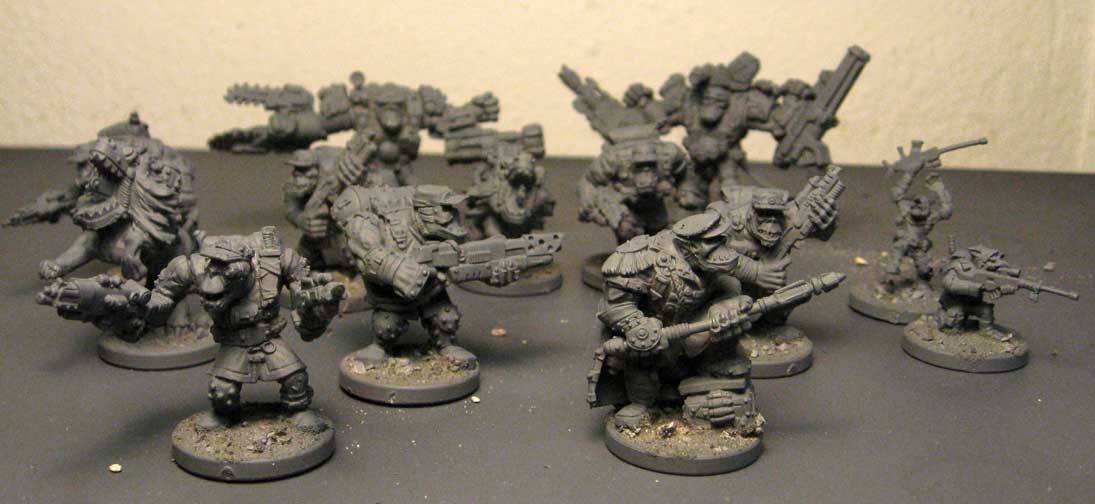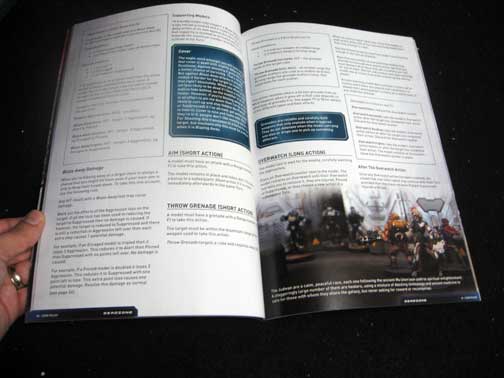Kickstarter – Holy Crap! A Kickstarter delivered early this must be a Christmas Miracle. I arrived home to find this massive brown box on my porch last week. I didn't get a chance to dig into it until now but after opening it up look what I found.
Deadzone Box Set – The box is huge. I'm impressed with what they were able to fit into this box. I'm not sure that this will be the same as the general release but the one box held EVERYTHING for the (4) factions included in the Strike Force Pledge. It sounds like there is still some additional stuff that will ship later with part two.
Anyone who put together the original Super Dungeon Explore minis with be familiar with the massive amount of baggies with models and parts sealed together. At first glance it appears these models have unique pegs that will only fit certain holes. Nifty for the board gamer kind, kind of a pain for the modeler.
These are not polystyrene plastic models so you'll need to use super glue to put them together, plastic glue won't work. (One of my biggest pet peeves ... if you call them plastic models plastic cement should work ... they really need to call them something other than plastic).
The rulebook is nice and in full color. It's a little thin but at first glance it seems to cover the fairly simple ruleset and gives a good introduction to the universe.
Faction Starters – Tons of baggies. 4 Decks of Cards.
Terrain Sprues and Game Mat– Lots of good stuff here. It's a little light if you want to build full scale buildings but to create the paintball style layout pictured on the box it works. For the 2'x2' playmat you have in the box you should be able to do some interesting stuff. I'm looking forward to playing with the connectors to see it I can paint it and still keep the lego-like quality of the system. (Based on past experience with the Pegasus Platformer kits I doubt this will be possible)
The overall quality of Mantic stuff is pretty consistent, for the most part you know what you're getting yourself into if you've ever bought anything else from them. Not quite GW quality but then again not quite GW cost either. You're either a fan of this stuff or not there's not much room for fence sitting.
Personally, I hate Mantics base system and really wish they'd use something other than a disk of plastic on the models base. If you want to use any fancy resin bases the size will be off by a little and you'll have to figure out how to remove the models from that chunky base.
I'm looking forward to digging into this game in the future and putting up a full review of the rules and some battle reports once I have some time to spend with it. (At the moment I have my hands full with commision work and don't have time to get deep into this)
It all looks positive and the rules seem simple enough that in a few years my son will be able to play the game with me. Or some simple version of it.













































































